
Elbphilharmonie: Hamburg's Architectural Symphony
Experience Hamburg's architectural and musical masterpiece: the Elbphilharmonie, a stunning concert hall offering breathtaking views and world-class performances in a unique waterfront setting.
The Elbphilharmonie, affectionately known as "Elphi," is Hamburg's iconic concert hall, a stunning architectural marvel rising from the Elbe River. Perched atop a historic brick warehouse, its shimmering glass facade resembles a hoisted sail or a crystalline wave, offering breathtaking panoramic views of the city. More than just a concert venue, the Elbphilharmonie is a cultural hub, housing three concert halls, a hotel, apartments, and a public plaza. Its Grand Hall boasts world-class acoustics, while the Plaza provides a mesmerizing 360-degree vista of Hamburg's harbor and skyline. Whether you're a music aficionado or an architecture enthusiast, the Elbphilharmonie promises an unforgettable experience, blending history, innovation, and artistic brilliance into a harmonious whole. A visit to the Elbphilharmonie is a must for any traveler seeking to immerse themselves in Hamburg's vibrant cultural landscape.
A brief summary to Elbphilharmonie Hamburg
- Platz d. Deutschen Einheit 4, Hamburg, Hamburg-Mitte, 20457, DE
- +49403576660
- Visit website
Local tips
- Book Plaza tickets in advance, especially during peak season, to avoid long queues and guarantee access to the panoramic viewing platform.
- Consider attending a concert to experience the Elbphilharmonie's world-class acoustics and unique atmosphere. Concert tickets often include access to the Plaza.
- Take a guided tour to learn about the Elbphilharmonie's history, architecture, and musical program. Tours start from the Elbphilharmonie Ticket shop on the ground floor.
- Explore the HafenCity district surrounding the Elbphilharmonie, a vibrant urban area with modern architecture, shops, restaurants, and cultural attractions.
- Arrive at least 30 minutes before your concert or tour to allow time for security checks and to explore the building's public areas.
Getting There
-
Public Transport
For the final approach to the Elbphilharmonie, public transport is highly recommended due to limited parking. From Hamburg Hauptbahnhof (main train station), take the U3 underground line to Baumwall (Elbphilharmonie) station. From there, it's a short, approximately 450-meter walk. Alternatively, take the U4 line to Überseequartier station, which is about a 950-meter walk. Several bus lines also serve the area; bus 111 stops at Am Kaiserkai (Elbphilharmonie), just 150 meters from the entrance, while bus 6 stops at Auf dem Sande (Speicherstadt), about 550 meters away. A single HVV ticket for a short trip within Hamburg costs approximately €1.90 - €3.60.
-
Ferry
Another scenic option is to take Ferry line 72 from Landungsbrücken to the 'Elbphilharmonie' landing stage, which is directly in front of the building. This offers a unique perspective of the Elbphilharmonie from the water. A single ferry ticket costs around €3.60.
-
Taxi/Ride-Share
If arriving by taxi or ride-sharing service, direct the driver to Platz der Deutschen Einheit. Be aware that traffic can be congested, especially during peak hours or event times. A short taxi ride from Hamburg city center will cost approximately €9-€12.
-
Driving
If driving, parking is available in the Elbphilharmonie's multi-story car park, but spaces are limited and expensive. Pre-booking online is highly recommended. The car park is open 24/7. Short term parking costs from €5.50 per hour, with a daily maximum of €50. A flat rate of €15 is available for 4 hours if booked online at least 2 hours in advance. A 24-hour flat rate booked online costs €35. Please note that the car park entrance is marked 'Elbphilharmonie' and only cashless payments are accepted. As an alternative, consider parking in Speicherstadt and walking to the Elbphilharmonie.
Discover more about Elbphilharmonie Hamburg
Iconic landmarks you can’t miss
Niederbaumbrücke
0.3 km
Cross the Niederbaumbrücke in Hamburg for stunning views of the Elbe, Speicherstadt, and HafenCity, bridging the city's rich maritime past with its modern future.
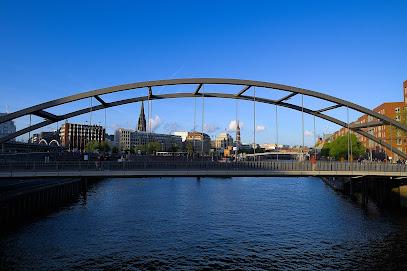
Binnenhafen Viewpoint
0.3 km
Experience breathtaking panoramic views of Hamburg's harbor and HafenCity from the Binnenhafen Viewpoint, a serene escape offering a unique perspective on the city's maritime charm.
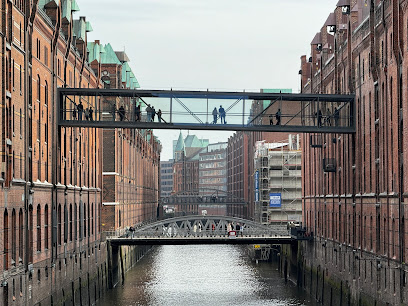
Baumwall
0.4 km
Explore Hamburg's maritime heart at Baumwall, where history meets modern innovation, offering access to iconic landmarks like the Elbphilharmonie and Speicherstadt.
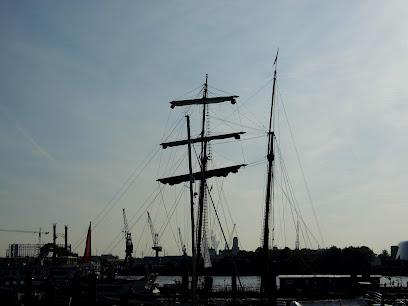
Hohe Brücke 2
0.4 km
Discover Hamburg's maritime history and architectural beauty at the Hohe Brücke, a picturesque bridge offering stunning views of the Nikolaifleet and the historic Deichstraße.
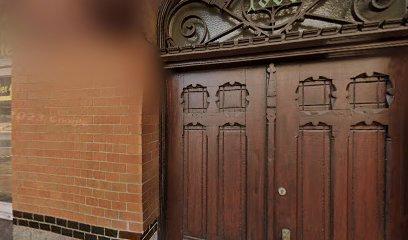
Old Boiler House
0.4 km
Explore Hamburg's industrial past at the Old Boiler House, now the HafenCity InfoCenter, where history meets modern urban development on the picturesque Sandtorkai.
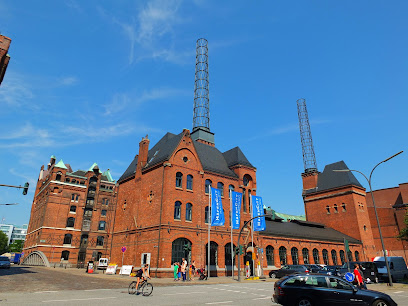
Kleines Dock
0.5 km
Discover Hamburg's maritime heart at Kleines Dock: historic Deichstraße, Hanseatic architecture, waterfront charm, and culinary delights await near the Speicherstadt.
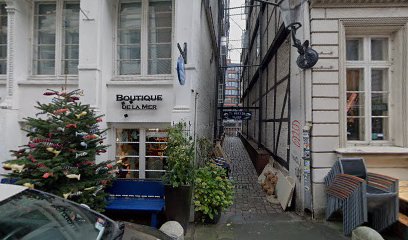
Deichstraße
0.6 km
Discover Hamburg's oldest street, a picturesque lane of meticulously restored 17th-19th century houses along the Nikolaifleet, offering a glimpse into the city's Hanseatic past.
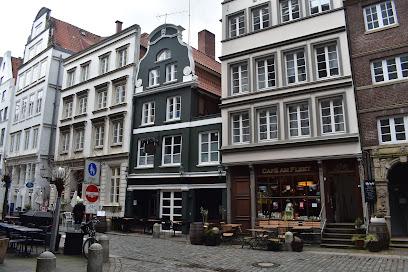
Mattentwiete 2
0.6 km
Discover Hamburg's maritime soul from Mattentwiete 2: Gateway to the UNESCO World Heritage Speicherstadt, a captivating blend of history, architecture, and culture.
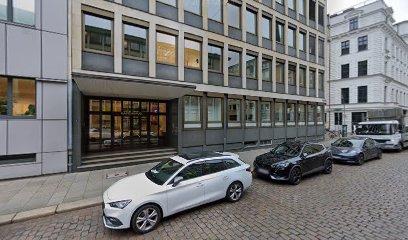
Brooksfleet
0.6 km
Discover the serene beauty of Brooksfleet, a picturesque canal in Hamburg's historic Speicherstadt, offering a tranquil escape and a glimpse into the city's maritime past.
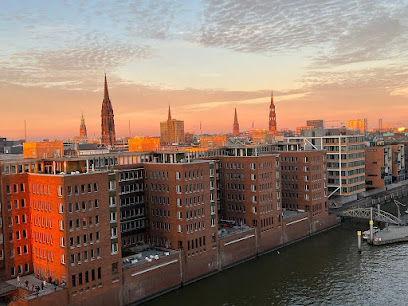
Kibbelstegbrücke
0.7 km
Cross the Kibbelstegbrücke in Hamburg's Speicherstadt for iconic views of historic warehouses and modern architecture, a perfect blend of past and future.
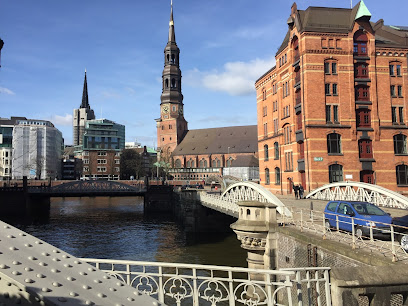
Speicherstadt
0.7 km
Explore the Speicherstadt, Hamburg's UNESCO World Heritage Site: a captivating blend of neo-Gothic architecture, historic canals, and vibrant cultural attractions in the heart of HafenCity.
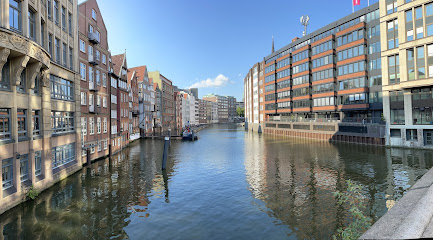
Michelwiese Fountain
0.7 km
Escape the city bustle at Michelwiese Fountain, a tranquil green space near St. Michael's Church offering relaxation, recreation, and unique public BBQ facilities in Hamburg-Mitte.
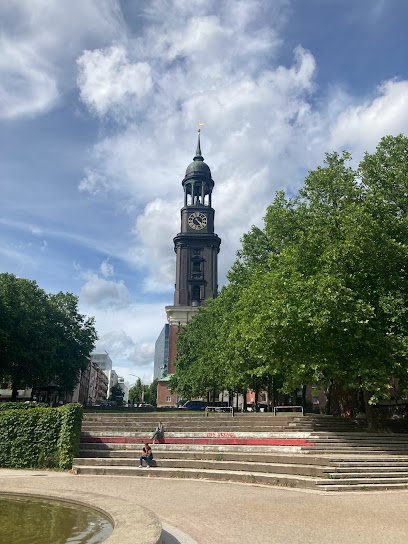
St. Nikolai Memorial
0.8 km
Explore the poignant St. Nikolai Memorial in Hamburg: a powerful symbol of wartime destruction, resilience, and a beacon for peace, offering history, panoramic views, and reflection.
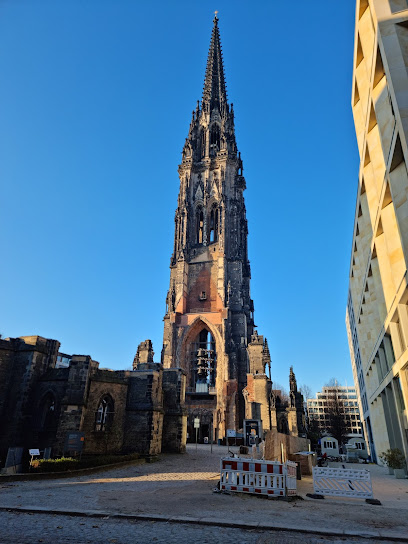
Brunnen am Krayenkamp
0.8 km
Discover the historic Krameramtsstuben, a charming 17th-century courtyard in Hamburg-Mitte, offering a glimpse into the city's past with its well-preserved architecture and unique atmosphere.
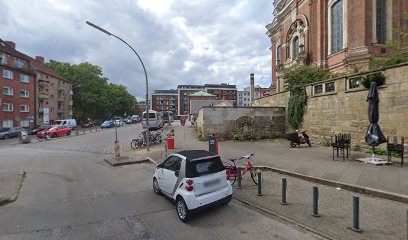
St. Nikolai Museum
0.8 km
Explore the ruins of St. Nikolai, a WWII memorial in Hamburg, offering panoramic city views, a poignant museum, and a carillon, fostering remembrance and reflection.
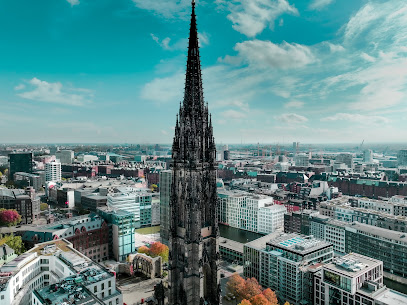
Unmissable attractions to see
Elbphilharmonie Plaza
0.0 km
Discover breathtaking vistas from Elbphilharmonie Plaza, Hamburg's iconic observation deck offering stunning views of the city and its vibrant harbor.
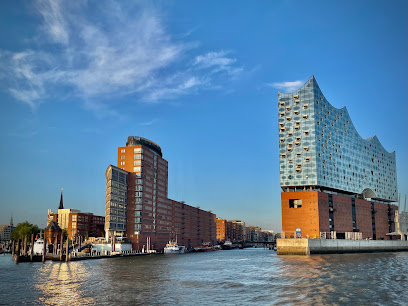
Elbphilharmonie concert box office
0.0 km
Experience the iconic Elbphilharmonie in Hamburg, an architectural masterpiece offering stunning views and world-class music performances.
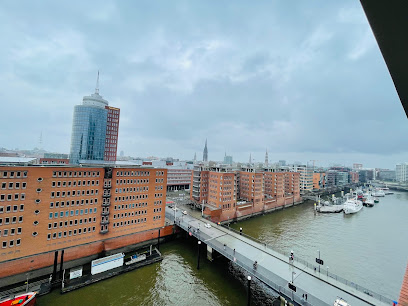
Platz der Deutschen Einheit
0.1 km
Discover the charm of Hamburg at Platz der Deutschen Einheit, a beautiful square symbolizing unity and cultural richness in the heart of the city.
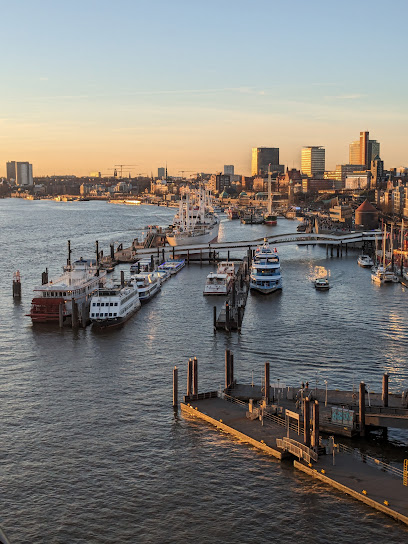
Elbphilharmonie Visitor Center
0.1 km
Discover the Elbphilharmonie Visitor Center, a cultural gateway in Hamburg showcasing stunning architecture and rich local history.
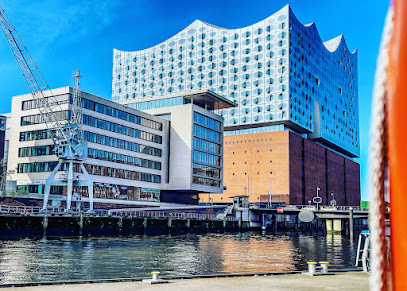
Mahatma-Gandhi-Brücke
0.1 km
Discover the Mahatma-Gandhi-Brücke in Hamburg: an architectural wonder that connects the city while offering breathtaking views and a peaceful stroll along the waterfront.
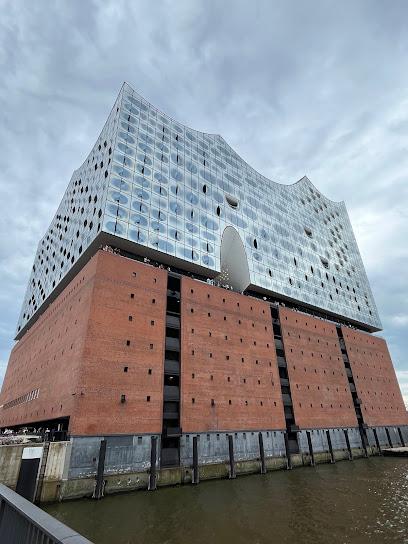
Viewpoint Elphi
0.1 km
Experience the stunning panoramic views of Hamburg at Viewpoint Elphi, a must-visit tourist attraction showcasing the city's rich skyline and vibrant harbor.
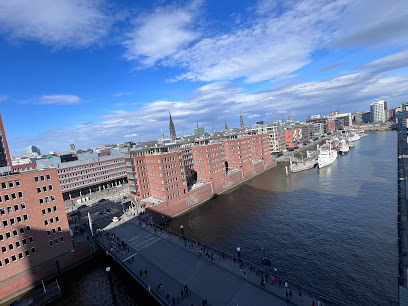
Elbpanorama Sandtorkai
0.1 km
Discover the stunning views of Hamburg’s harbor at Elbpanorama Sandtorkai, a breathtaking spot for relaxation and photography.
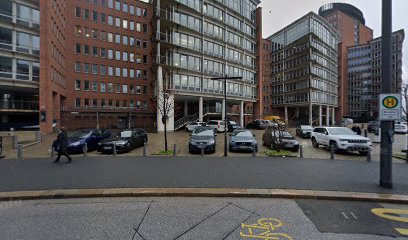
Columbus Haus
0.2 km
Discover the vibrant charm and maritime history of Columbus Haus in Hamburg, a must-visit tourist attraction for all travelers.
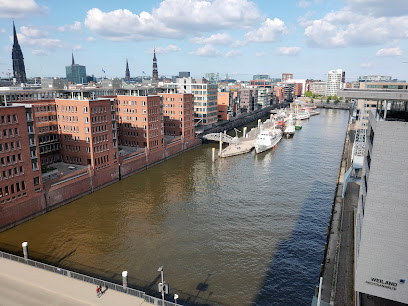
Wilhelminenbrücke Speicherstadt observation deck
0.2 km
Discover breathtaking views of Hamburg's skyline and vibrant harbor atmosphere at Wilhelminenbrücke Observation Deck.
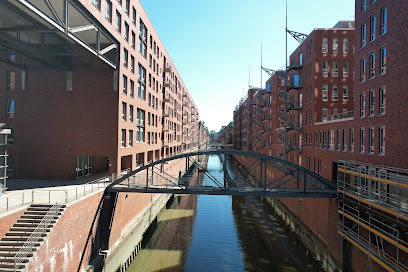
Sandtorhafen/Traditionsschiffhafen
0.2 km
Explore the historic Sandtorhafen in Hamburg, a vibrant maritime hub showcasing restored ships and stunning waterfront views.
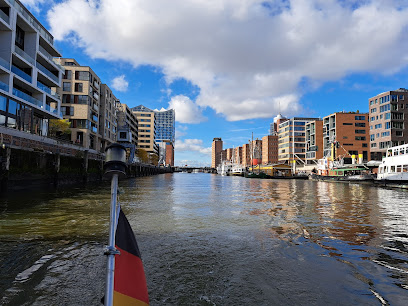
Kehrwiedersteg viewing platform
0.2 km
Discover stunning views of Hamburg's skyline and harbor at the Kehrwiedersteg Viewing Platform, a highlight for any traveler exploring the city.
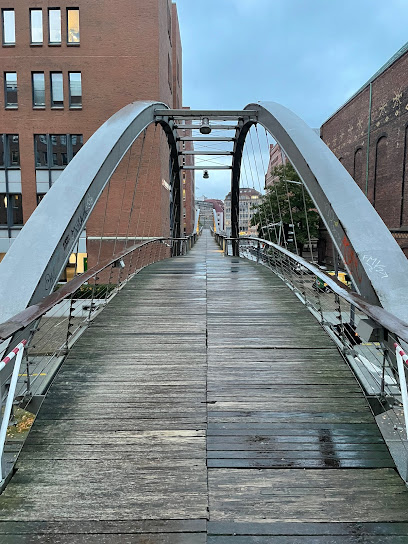
Kehrwiederspitze - Hamburg-Hafen
0.2 km
Discover the historical charm of Kehrwiederspitze, a stunning waterfront landmark in Hamburg's harbor showcasing breathtaking views and rich maritime heritage.

Kehrwiederspitze
0.2 km
Discover the stunning views and serene atmosphere of Kehrwiederspitze, Hamburg's picturesque waterfront gem perfect for leisurely exploration.
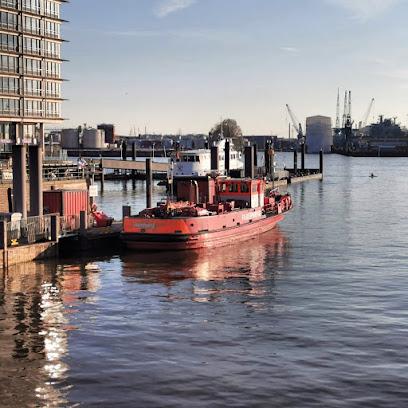
Treffpunkt Elbphilharmonieführung Sightseeing Kontor
0.2 km
Experience the architectural marvel of Elbphilharmonie in Hamburg, where stunning views meet world-class music and culture.
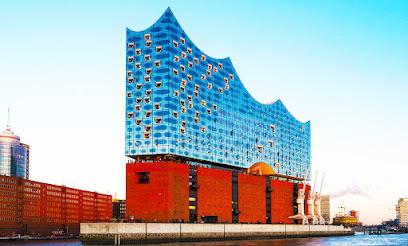
Harry's Hamburger Hafenbasar
0.3 km
Explore Harry's Hamburger Hafenbasar in Hamburg - a unique museum blending maritime history with contemporary art, offering stunning views and cultural insights.
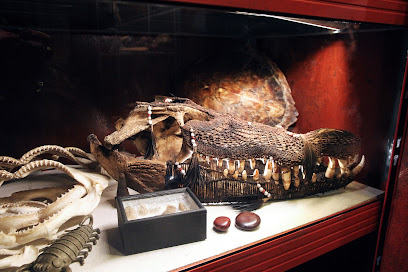
Essential places to dine
Kinfelts Kitchen & Wine
0.2 km
Experience culinary excellence at Kinfelts Kitchen & Wine in Hamburg—a perfect blend of bistro charm and exquisite wines.
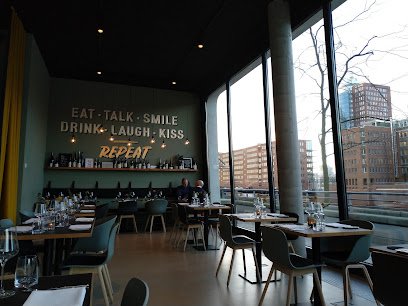
Heimathafen
0.4 km
Discover authentic German flavors at Heimathafen, where traditional cuisine meets vibrant atmosphere in the heart of Hamburg.
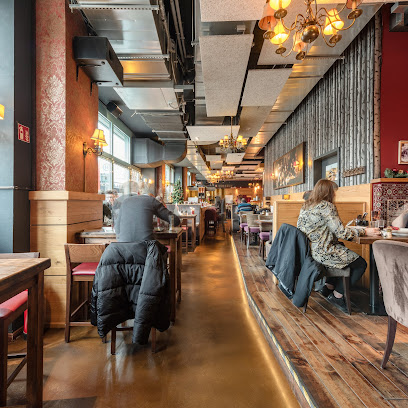
Bootshaus Grill & Bar - Hafencity
0.4 km
Discover Bootshaus Grill & Bar in Hafencity: A premier destination for exquisite dining and handcrafted cocktails in Hamburg's vibrant waterfront.
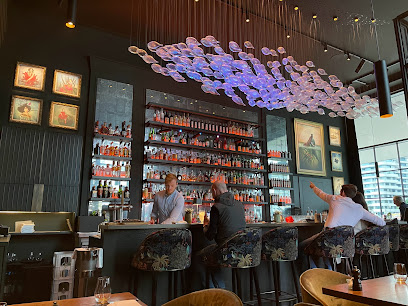
Restaurant Porticello
0.5 km
Experience authentic Italian cuisine in Hamburg at Restaurant Porticello - where every dish tells a story.

Deichgraf Restaurant
0.6 km
Experience exquisite dining at Deichgraf Restaurant in Hamburg—where fresh local ingredients meet culinary artistry.
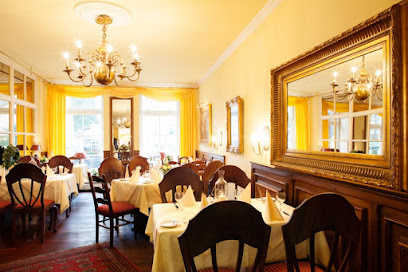
Sala Thai Restaurant
0.6 km
Experience authentic Thai cuisine at Sala Thai Restaurant in Hamburg - where tradition meets flavor in every dish.
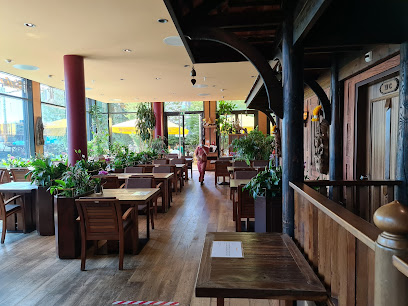
Restaurant Kartoffelkeller
0.6 km
Savor authentic German flavors at Restaurant Kartoffelkeller in Hamburg – a delightful culinary experience awaits!
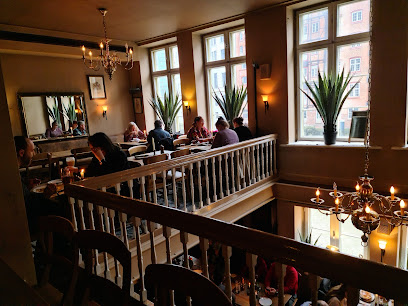
coast by east Hamburg
0.6 km
Discover exceptional sushi and seafood at Coast by East Hamburg – where exquisite flavors meet modern elegance in the heart of the city.
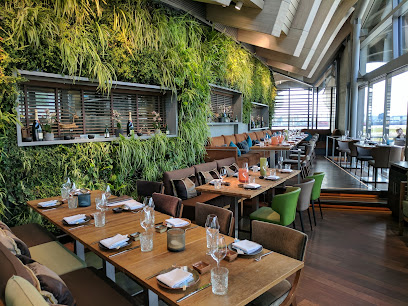
Restaurant Schoppenhauer
0.6 km
Savor the essence of Germany at Restaurant Schoppenhauer - where tradition meets taste in Hamburg.
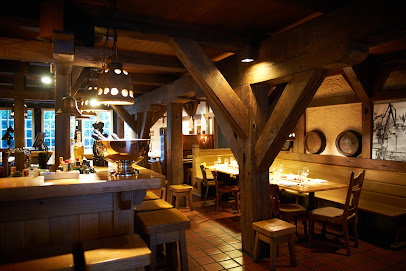
Goa HafenCity Indisches Restaurant
0.6 km
Experience authentic Indian flavors at Goa HafenCity, where tradition meets modernity in Hamburg's vibrant waterfront.
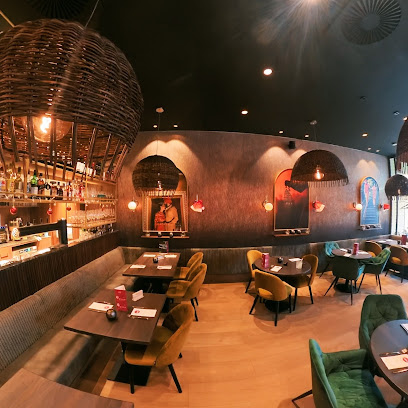
mama trattoria Hamburg Hafencity
0.6 km
Experience authentic Italian cuisine at Mama Trattoria in Hamburg's Hafencity—where every bite feels like a trip to Italy.
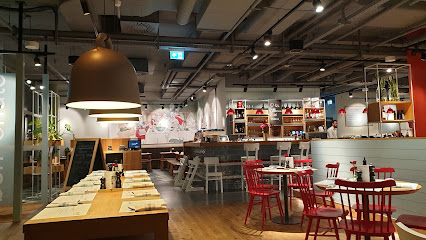
Caramba Especial
0.7 km
Savor authentic Portuguese and Spanish cuisine at Caramba Especial in Hamburg – where every dish tells a story.
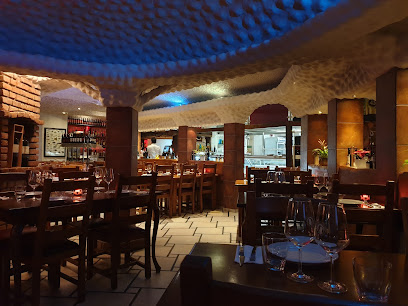
Restaurant Brook
0.8 km
Experience exquisite French and Mediterranean cuisine at Restaurant Brook in Hamburg – where every dish tells a story.
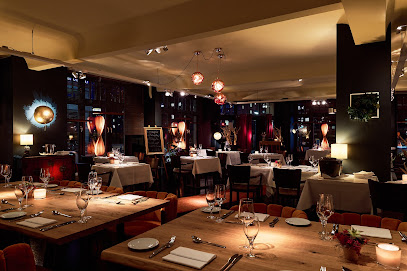
KITCHENS Restaurant & Bar
0.8 km
Experience Hamburg's culinary delights at KITCHENS Restaurant & Bar - where modern cuisine meets vibrant atmosphere along the waterfront.
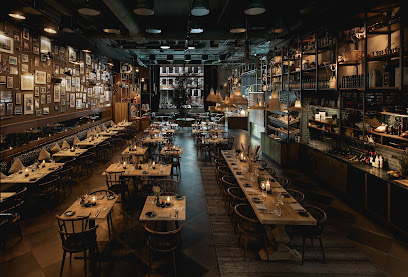
THE DINING RooM
0.8 km
Discover the exquisite flavors of American, French, and German cuisine at The Dining RooM in Hamburg - a fine dining experience like no other.
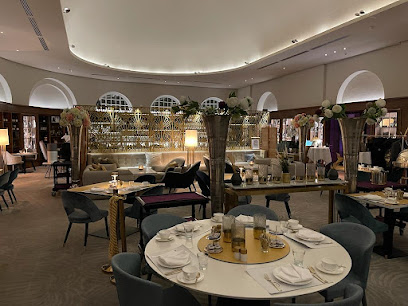
Markets, malls and hidden boutiques
D!FFERENT WOMEN | Hamburg-Hafencity
0.2 km
Explore Hamburg's chic women's clothing store, D!FFERENT WOMEN, featuring unique styles that elevate your fashion game in the city's Hafencity district.
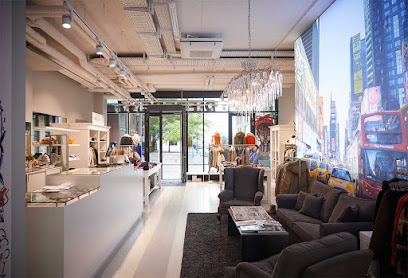
53 ° Hamburg | Store | CMD
0.2 km
Explore 53 ° Hamburg for trendy apparel and unique souvenirs along the beautiful Elbe promenade, capturing the essence of local fashion and style.
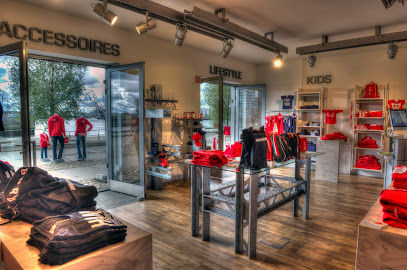
Boutique de la Mer -Ti Breizh
0.5 km
Explore unique fashion at Boutique de la Mer - Ti Breizh in Hamburg-Mitte, a stylish destination for clothing lovers and travelers alike.
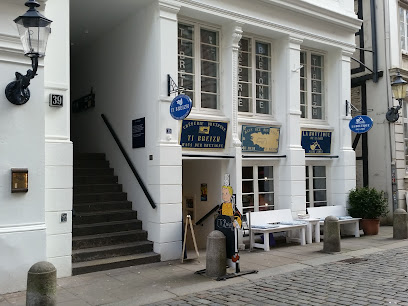
Hoi Lieblingsstücke
0.7 km
Explore Hoi Lieblingsstücke in Hamburg for unique gifts and souvenirs that capture the city's artistic spirit and local charm.

Frau Vogel – Erinnerungen an Hamburg
0.8 km
Explore Frau Vogel, Hamburg's enchanting gift shop, offering unique souvenirs and local crafts to capture the city's spirit.

The Art of Hamburg
0.8 km
Explore the vibrant blend of art and fashion at The Art of Hamburg, a boutique celebrating local creativity and unique souvenirs.
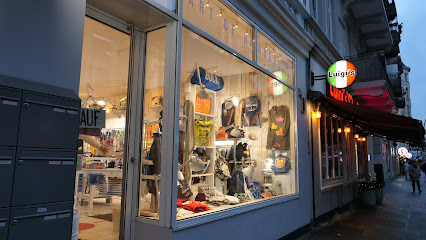
Speicher & Consorten
0.8 km
Discover unique gifts and local delicacies at Speicher & Consorten, a charming shop in Hamburg's historic Speicherstadt.
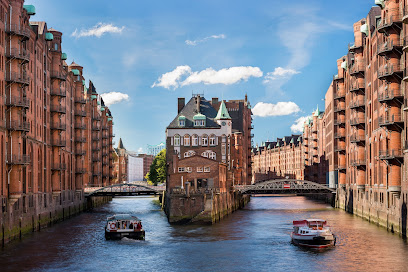
25Things Shop
1.0 km
Discover unique souvenirs and local treasures at Hamburg's 25Things Shop, a must-visit for all tourists seeking the essence of this vibrant city.
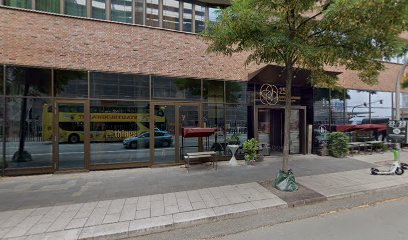
wasted hour - concept store
1.0 km
Explore Wasted Hour in Hamburg - a concept store that redefines fashion with unique designs and an inspiring atmosphere.

CHANEL BOUTIQUE HAMBURG
1.0 km
Explore the luxury and elegance of CHANEL Boutique Hamburg, where timeless fashion meets exquisite craftsmanship in a stunning shopping experience.
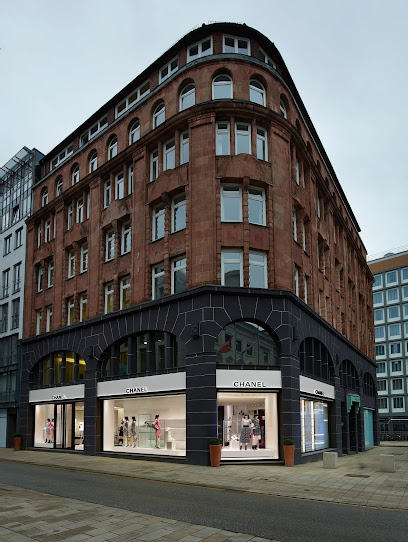
Shop des Maritimen Museums
1.0 km
Discover Hamburg's maritime heritage through unique souvenirs at the Shop des Maritimen Museums, perfect for every traveler.
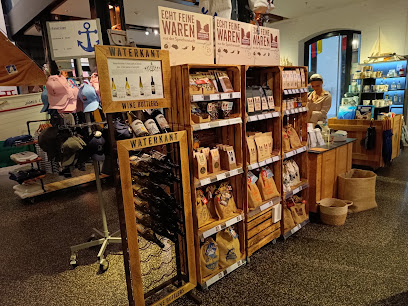
nosame GmbH
1.1 km
Explore nosame GmbH in Hamburg for unique gifts and stylish clothing that reflect the city's eclectic charm and creativity.

Gudrun Sjödén - concept store Hamburg
1.1 km
Explore Gudrun Sjödén's concept store in Hamburg for vibrant women's fashion, unique accessories, and a touch of sustainable style.
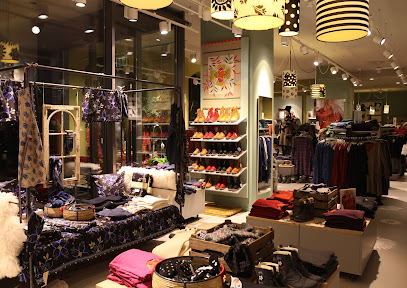
I love Hamburg
1.1 km
Explore unique souvenirs that embody the spirit of Hamburg at I Love Hamburg, located by the iconic St. Pauli Landungsbrücken.

Montblanc Boutique Hamburg - Neuer Wall
1.1 km
Experience the epitome of luxury at Montblanc Boutique Hamburg, offering exquisite jewelry, leather goods, and fine stationery in a sophisticated setting.
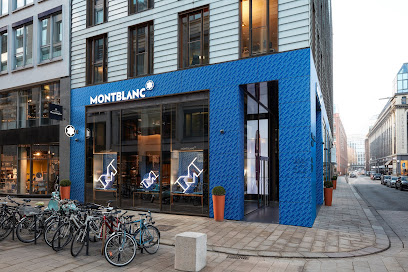
Essential bars & hidden hideouts
BLICK Bar Elbphilharmonie
0.0 km
Discover Hamburg's stunning skyline while enjoying exquisite cocktails at BLICK Bar Elbphilharmonie, a must-visit gem in the city's nightlife.
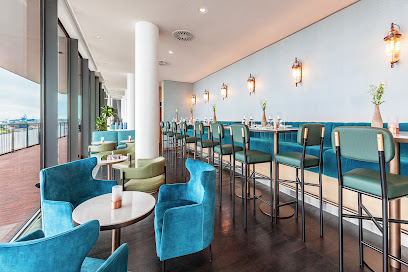
Whiskyplaza & Altstadt Restaurant am Fleet
0.5 km
Discover Hamburg's Whiskyplaza & Altstadt Restaurant, a culinary haven where fine dining meets an exquisite cocktail experience in a historic setting.
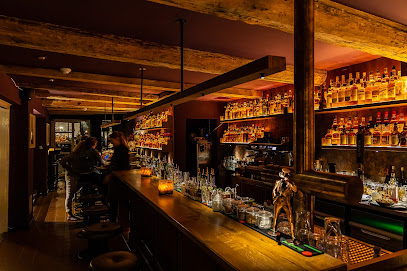
The Bohemian - Bar
0.5 km
Discover The Bohemian, Hamburg's premier cocktail bar, known for its signature drinks and vibrant nightlife in the heart of the city.
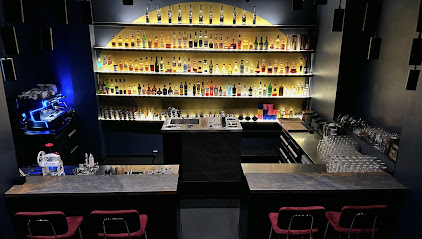
Three Fingers Bar
0.8 km
Experience the vibrant nightlife of Hamburg at Three Fingers Bar, where stunning waterfront views meet expertly crafted cocktails.
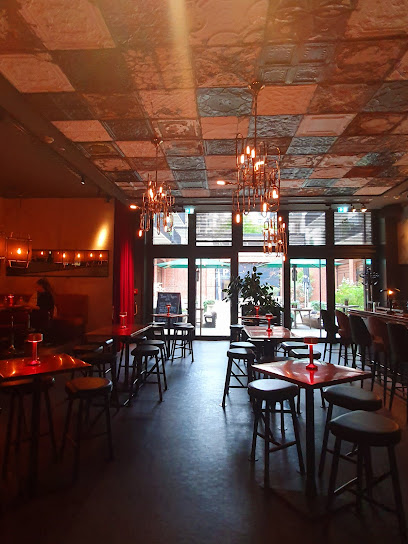
MOON 46
0.8 km
Discover the lively ambiance and exquisite cocktail selection at MOON 46, a must-visit bar in Hamburg's vibrant nightlife scene.
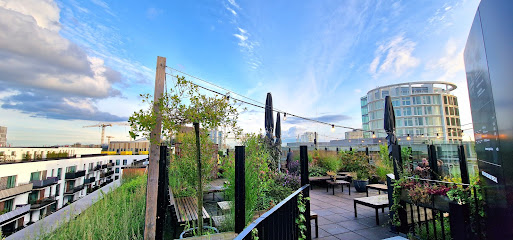
The Boilerman Bar Hafenamt
0.9 km
Discover an extraordinary cocktail experience at The Boilerman Bar Hafenamt, where quality meets creativity in the heart of Hamburg.
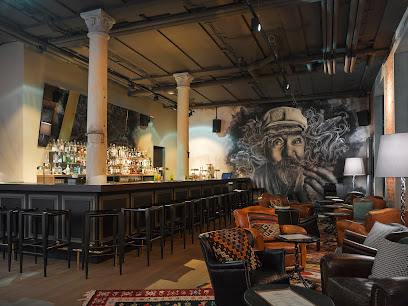
Club 20457
0.9 km
Experience Hamburg's vibrant nightlife at Club 20457, where art meets music in a lively bar setting.
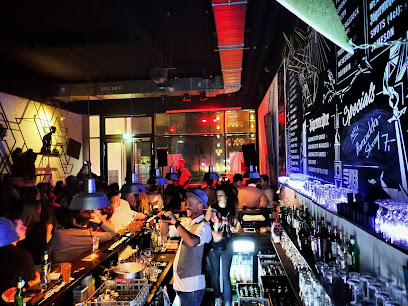
Irish Pub in the Fleetenkieker
1.0 km
Immerse yourself in the lively spirit of the Irish Pub in the Fleetenkieker, Hamburg, where great food, drinks, and live music await.
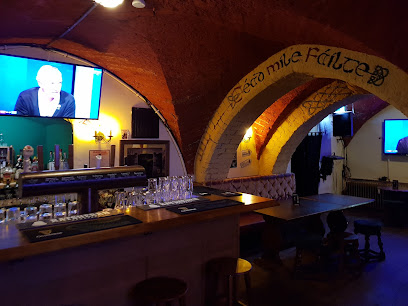
Kumpin
1.1 km
Discover Kumpin, Hamburg's chic bar offering a vibrant atmosphere, exquisite drinks, and a perfect spot to unwind after a day of exploring the city.
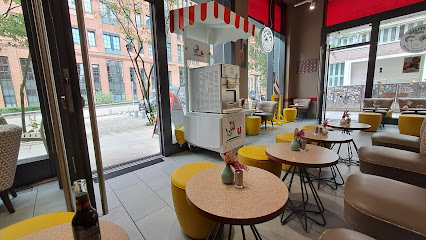
Ba Nomu | Bar
1.1 km
Discover Ba Nomu, Hamburg's cocktail haven, where creativity meets taste in a vibrant, stylish atmosphere perfect for unforgettable nights.
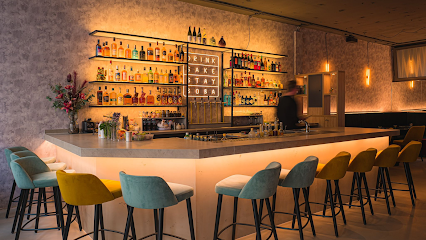
Paddy's Bar
1.1 km
Discover the vibrant atmosphere of Paddy's Bar, Hamburg's favorite Irish pub, offering hearty meals, a wide drink selection, and live music.
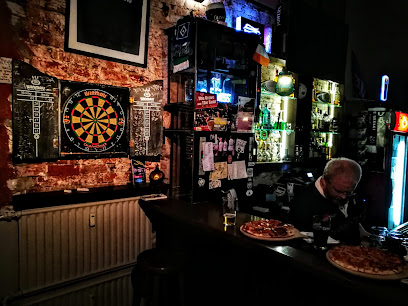
Le Lion • Bar de Paris
1.2 km
Discover the luxury of Le Lion • Bar de Paris, Hamburg's premier destination for exquisite cocktails and elegant ambiance.

Gugu Bar
1.2 km
Experience the vibrant nightlife of Hamburg at Gugu Bar, where eclectic decor meets an extensive drink menu in a lively atmosphere.
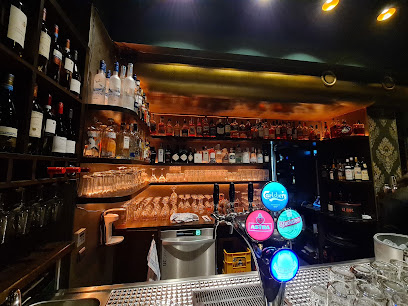
ZWICK St. Pauli
1.4 km
Discover the vibrant nightlife at ZWICK St. Pauli, where live music and delicious dining create unforgettable experiences in Hamburg.

Liquid Garden - Cocktailbar
1.4 km
Discover Liquid Garden, Hamburg's vibrant cocktail bar where creativity and flavor blend for unforgettable nights and unique drinks.




